mekongeye.com by Thu Quynh Nguyen 31 July 2023 at 14:39
As coral reefs and marine life disappear, efforts to save them are underway, but is it too late?
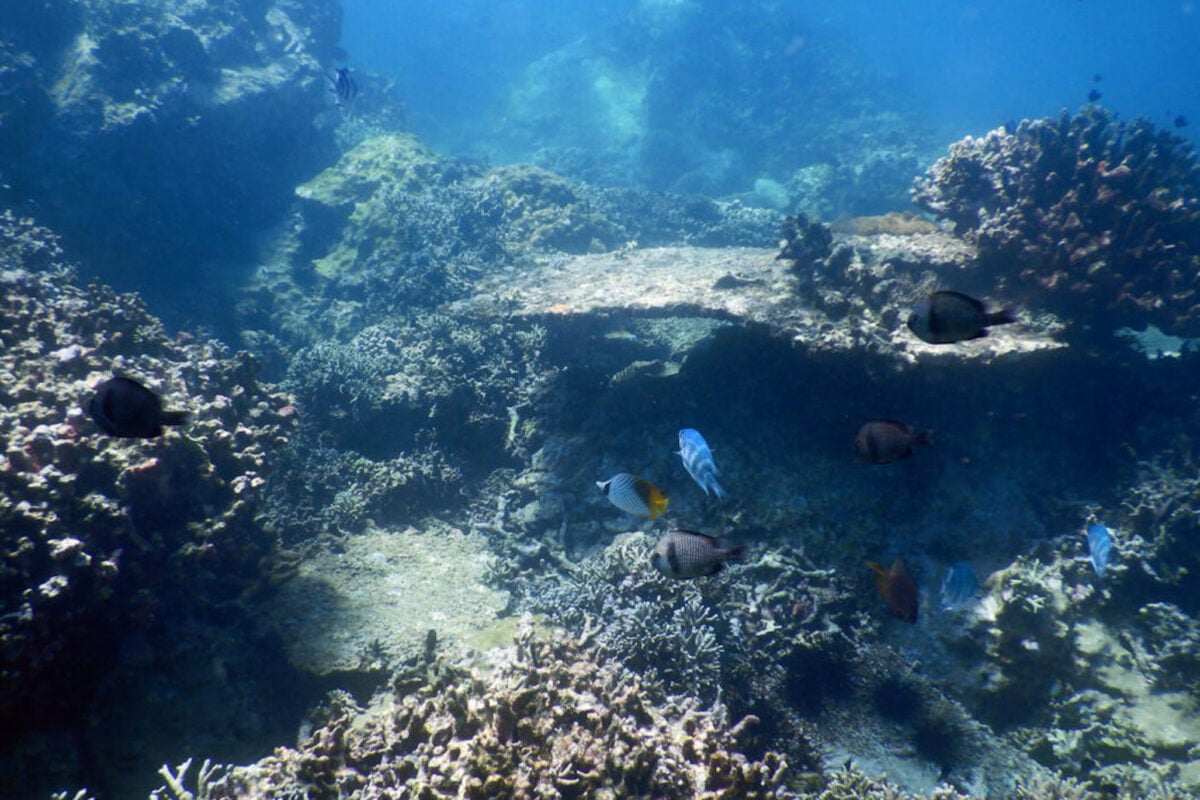
Coral die-off in Hon Mun, Nha Trang. PHOTO: Konstantin Tkachenko.
NHA TRANG, VIETNAM ― In Hon Chong, one of Vietnam’s last coral reefs, colorful schools of fish have become distant memories. These days, only small fish lurk behind bleached coral formations, a stark difference from the way some travel brochures depict the place.
Half an hour by boat from Hon Chong is Hon Mun, a marine conservation site once home to more than 340 coral species, and valued at approximately US$70 million for its biodiversity in 2005.
About 10 years before the Covid-19 pandemic, professional divers started noticing a gradual depletion of the coral reefs in the area. They had hoped that lockdowns and border closures would alleviate stress from tourism and revive the reef.
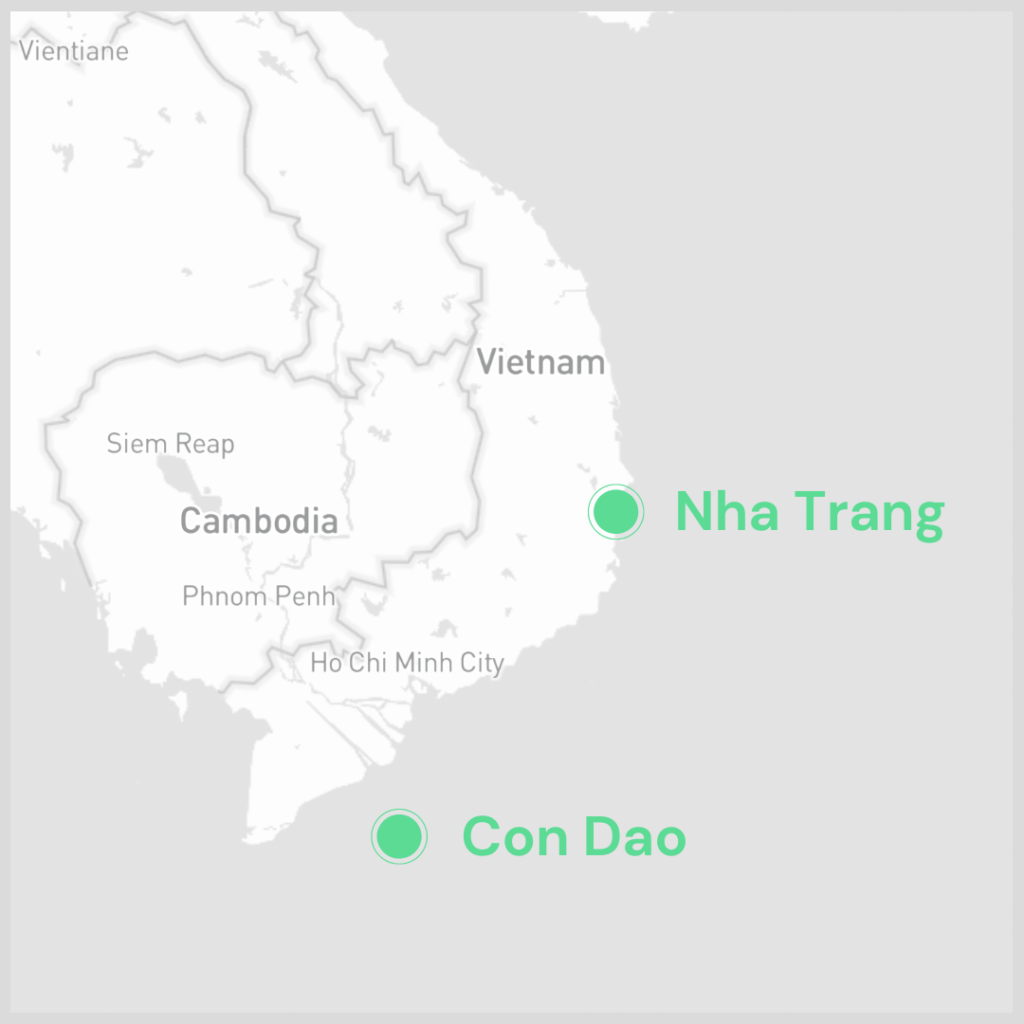
“After two years [of Covid-19], I was speechless to see the ocean bed so empty, the coral all bleached,” photographer Na Son, a diver who has made hundreds of trips down to Hon Mun’s ocean bed, told Mekong Eye in June 2023. Last June, Na Son was one of many divers who spoke to local media about Hon Mun’s alarming coral depletion.
Coral reefs are considered to be one of Vietnam’s national treasures, as the country boasts one of the world’s most diverse ecosystems with 355 species, according to data from the World Resources Institute.
Yet across the country, vital coral reserves are depleting at such an alarming rate that frenzied attempts to salvage what remains are likely to be insufficient to restore the ecosystems.
To save the reefs, since June 2022, Nha Trang authorities closed Hon Mun to tourism, conducted impact assessments, installed surveillance cameras and launched a coral recovery program. Prior to these policy changes, coral cover in several sites in Nha Trang Bay had already plummeted by as much as 98%.
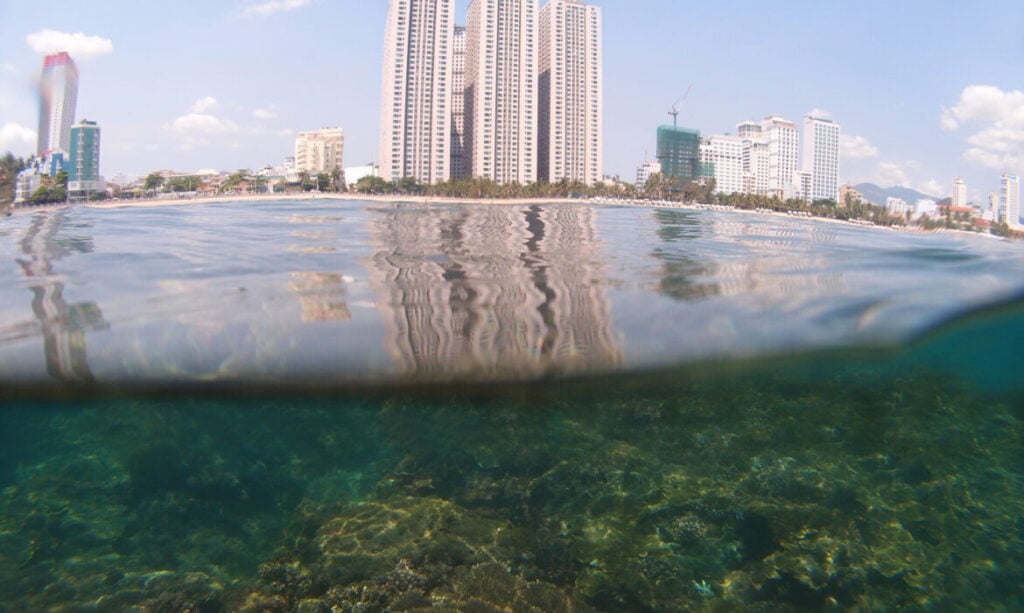
On average, between 2016 and 2019, coral cover in this area dropped by 64.4%, according to research on 10 coral sites published in 2020 by Konstantin Tkachenko at Samara University in Russia.
Other research by Le Doan Dung published in 2020 revealed that only 5% of six studied coral sites across central Vietnam remained healthy, with coral cover above 75%. The rest were in poor condition with coral cover of less than 25%.
Marine life is also disappearing because of the loss of coral reefs. Research published in 2022 on the Phu Quoc Marine Protected Area (MPA) found an alarming trend – fish longer than 20 centimeters accounted for only 1% of the total number of fish found.
The researchers also found a disturbingly low density (below 1%) of high-value target species such as grunts, snapper and emperor fish.
Fishermen have experienced this loss first-hand. “We used to be picky about what fish to catch. No ship could hold all the fish,” said Hai*, a fisherman whose name has been changed to protect his identity, as he recalled the abundance of catches 20 years ago in Con Dao, one of the last coral strongholds in Vietnam.
“Back then, making $300 a night was easy,” Hai told Mekong Eye. This is no longer the case. According to research by scientists from the Institute of Oceanography and Con Dao National Park, between 2005 and 2019, the density of target edible species was alarmingly low, and the number of deep-water endangered species declined dramatically.
As the ecosystem loses its balance and marine predators disappear, coral faces another challenge that further diminishes its chances of recovery: the crown-of-thorns starfish (COTS). COTS thrive on vulnerable reefs and each one could wipe out up to 15 square meters of coral per year.
When COTS plagued Con Dao in 2022 and 2023, divers were stunned to find more than 30 starfish in an area of only 100 square meters. Similar to Con Dao, both Nha Trang Bay and Nui Chua reefs are suffering from COTS outbreaks.
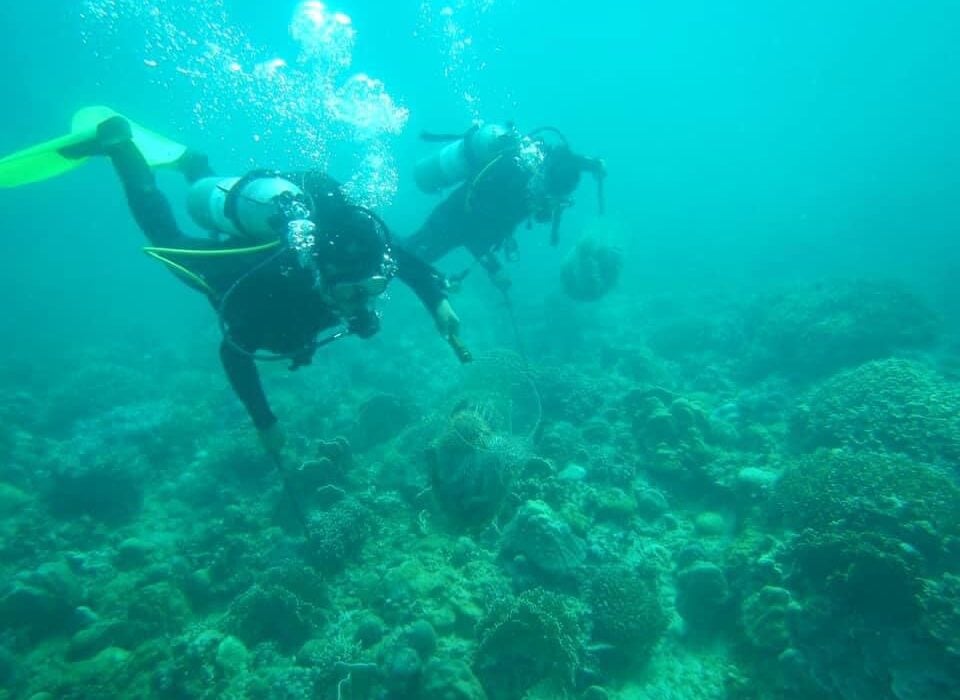
Twenty years of cashing in on coral
The causes of coral degradation are manifold and still being debated. Tkachenko, the professor of marine ecology at Samara University, a keen observer of central Vietnam’s coral reefs for more than a decade, believes tourism, aquaculture and commercial fishing are to blame.
“The complex of disturbances consists of major components: increasing sedimentation (land reclamation) activity on Hon Tre Island, bottom dredging, terrestrial run-off during wet seasons; increasing eutrophication (the concentration of nutrients in the bay) due to the dumping of sewage, the flushing of fertilizers from the fields and their penetration into the bay with the river’s fluxes and finally due to the booming development of aquaculture in the area; tremendous overfishing and overharvesting of marine resources including everything in the water and on the sea bottom,” Tkachenko told Mekong Eye.
On the other hand, Nguyen Duc Ai and his colleagues at The University of Queensland identified tourism-related construction activities such as waste disposal, leveling and dredging as the main culprits.
Meanwhile, the Khanh Hoa Provincial Party Committee stated in announcement No.347 in 2022 that there are both natural causes such as typhoons and climate change (not including ocean acidification), and human-made causes such as illegal fishing, ocean dredging, coastal construction without proper regulation and tourism waste.
While there is no scientific evidence directly linking typhoons and climate change to massive and swift coral depletion, substantial evidence supports commercial fishing and tourism-related activities as significant contributors, many of which are partial outcomes of social and economic policies.
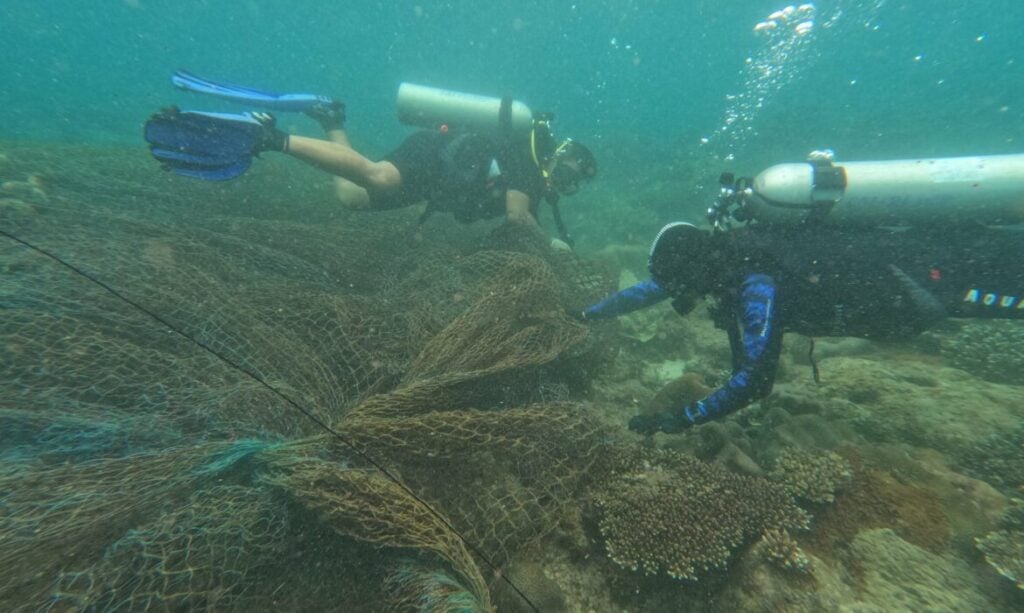
“Back then, [we] learned from foreign fishermen. Nobody said that cyanide was toxic, they told us it was just an anesthetic,” Hai, a fisherman in Con Dao, confessed. For more than a decade, fishermen like Hai had been using cyanide and other harmful practices such as bottom trawling and fine-mesh fishing that killed young fish and decimated the coral reefs.
These decisions, however, were partly fueled by government subsidies that incentivized offshore fishing. “The further from the shore, the less high-valued catches there are, the higher the cost and the less likely fishermen are going to make a profit,” Nguyen Viet Thanh of Hanoi National University explained.
“So, the more funding offered to fishermen, the lower the cost, the more reckless fishermen become. This led to a fast depletion of resources and in the long run, to a diminution of income and loss of livelihoods,” Thanh said.
According to recently published research that used data from the National Household Living Standards Survey in 2020, only 6% of households in coastal regions pursue an aquaculture lifestyle, but their incomes are significantly higher than those in offshore fishing groups.
Recognizing the shortfalls of offshore fishing, several coastal provinces have attempted to convince fishermen to switch their livelihoods to tourism.
When the Con Dao National Park Management Board and World Wildlife Fund (WWF) encouraged local fishermen to give up fishing and engage in tourism in 2013, Hai was one of the first to agree.
“Having listened to them, I wanted to work near the shore and be a better person. I no longer wanted to destroy the coral and risk my life fishing,” he said. Yet with limited financial support, Hai could only transform his small fishing boat into a shaky tourist boat, which frightened many of his customers.
Hai and his fishermen friends ended up selling their boats to buy rental canoes. Again, as the coral disappeared, the canoes outnumbered the tourists. “The coast is filled with canoes for sale. Divers say there are no longer any fish, so what can we do instead?” asked Hai.
In a similar attempt in 2003, Nha Trang province also tried to transition local people’s livelihoods by offering loans, creating environment friendly farming zones, encouraging people to invest in coral viewing glass-bottom boats, handicrafts and aquaculture.
The tasks were daunting and the results were modest, considering there were tens of thousands of fishing boats in Nha Trang Bay.
For Nha Trang, one of the most popular tourist destinations in Vietnam which welcomed more than four million people in 2023, tourism has been a double-edged sword. According to Tkachenko, before big investors started clearing mountains and flushing construction ruins into the ocean, mass tourism had incrementally been wiping out Nha Trang’s coral reefs.
For more than a decade before tourism was banned in key coral sites, sightseeing tours allowed tourists to take home branches of coral as souvenirs, or for their fish tanks. These days, bleached, hard coral is still being sold in wet markets.
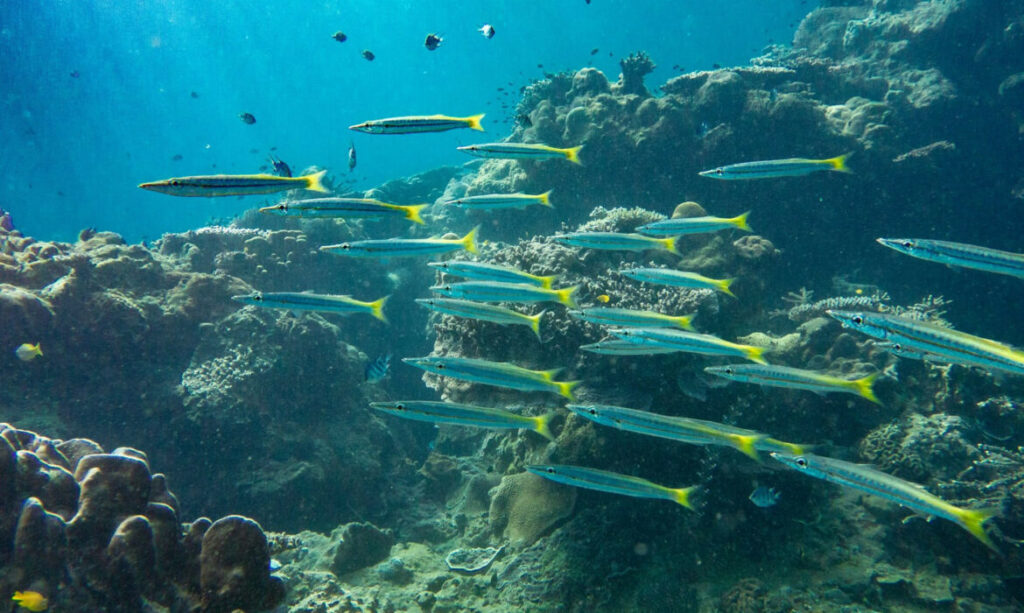
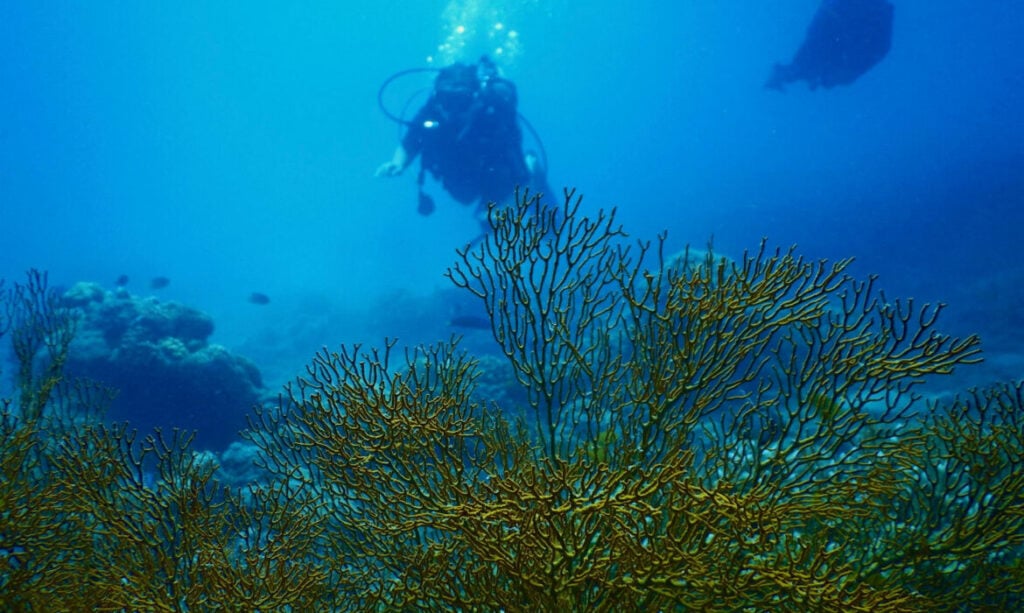
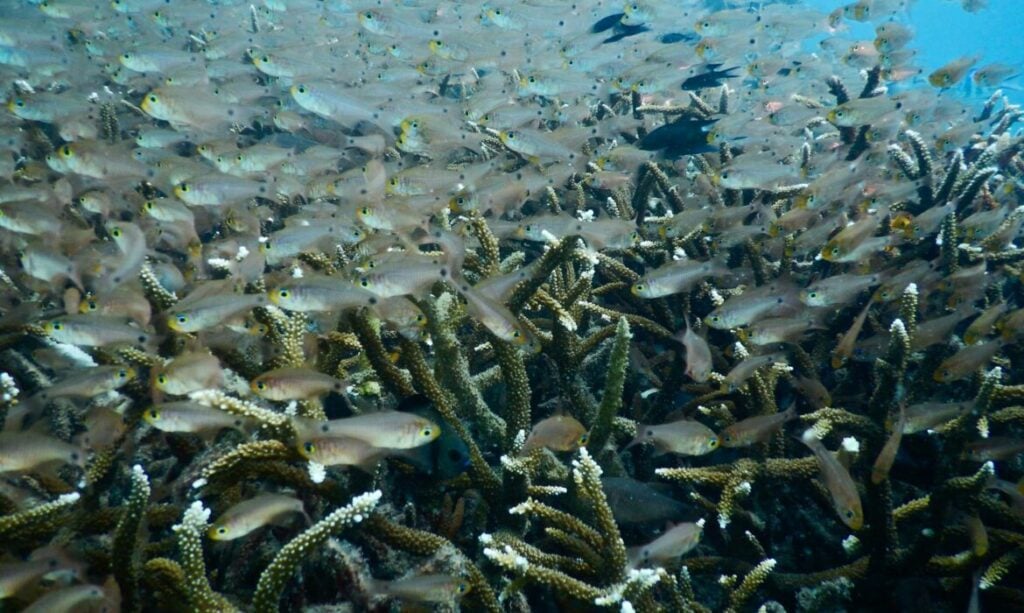
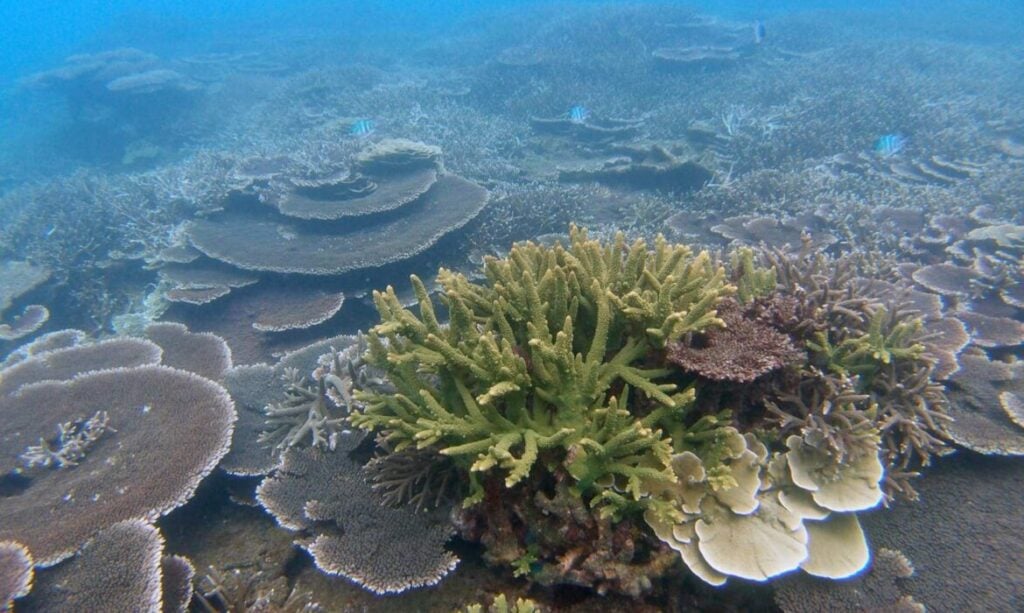
The last stronghold
A newly emerged tourism destination, Con Dao is considered the last sanctuary for coral in Vietnam.
In 2022, the island attracted 450,000 tourists, a similar number to Nha Trang in 1996. Foreseeing the growth in tourism, both local authorities and people have been making efforts to protect the reefs, from creating conservation zones, banning fishing, providing buoys for tourist canoes to avoid anchoring on coral, to moving ports away from key coral sites.
Con Dao authorities are also well known for their selectiveness with real estate investors, and public consultation is required before a resort is granted permission for construction. “The longer we can preserve the Con Dao ecosystem, the better,” Ho Phong, a local guide and diver who occasionally tries to kill crown-of-thorns starfish on his own to protect the reefs, told Mekong Eye.
“Although we might make more money with more tourists, there would be no forest or coral left. We preserve [the ecosystem] to attract tourists who care about the environment,” Phong said. He and other locals often rescue coral by removing fish nets and killing crown-of-thorn starfish with vinegar injections.
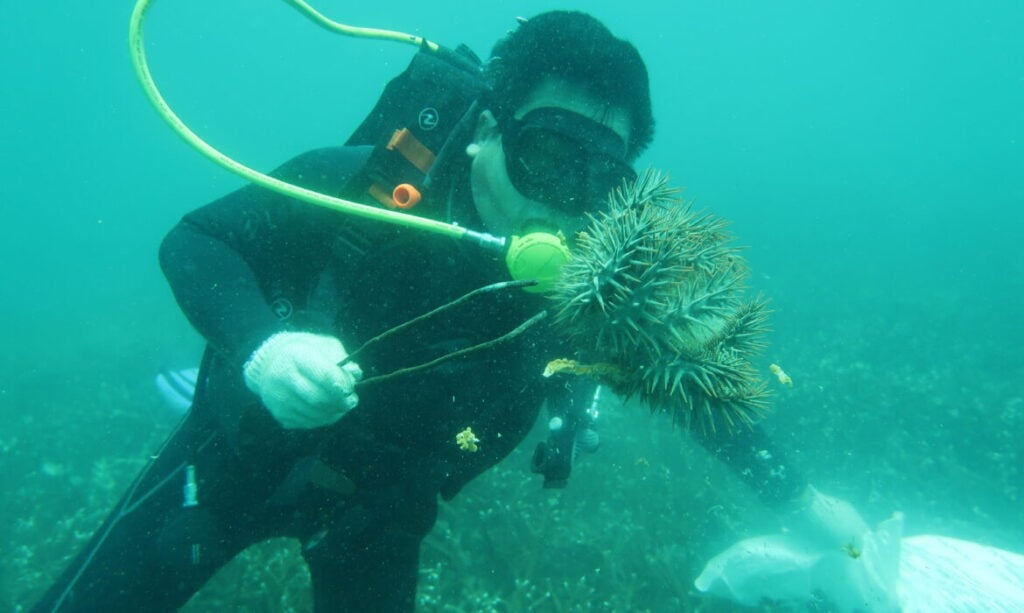
Despite such efforts, Con Dao’s coral reefs are still at high risk of depletion due to illegal fishing and the COTS outbreaks. “There is nothing for us to catch in coral-free zones, and 70-80% of potential fishing areas already belong to conservation, so we have to fish illegally,” a local fisherman who wished to remain anonymous told Mekong Eye.
“If we don’t do it, someone else would. At least we are locals, we still care about Con Dao. Outsiders, they will take everything and leave Con Dao with nothing,” he added.
“We are understaffed, and it is very difficult to recruit licensed divers who can commit to the hard work in the national park,” Le Hong Son, the head of the Conservation and International Cooperation Department of Con Dao National Park Management Board explained to Mekong Eye.
Now, it is three to four patrollers versus hordes of COTS and roughly 1,000 fishing boats, many of which are bottom trawlers with hooked fishnets. Unless viable alternative livelihoods are found, Con Dao is on a similar trajectory to other coral hotspots – a desolate seabed.
This story was produced in collaboration with Tia Sang Magazine and supported by Internews’ Earth Journalism Network.
ABOUT THE WRITER
Thu Quynh Nguyen
Thu-Quynh Nguyen is currently the managing editor of Tia Sang magazine, a trusted publication among academia, policymakers and the private sector. She covers economic and gender inequality in Vietnam. She holds a MA in Anthropology from Thammasat University, Thailand. More by Thu Quynh Nguyen
